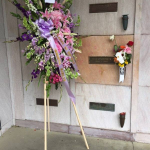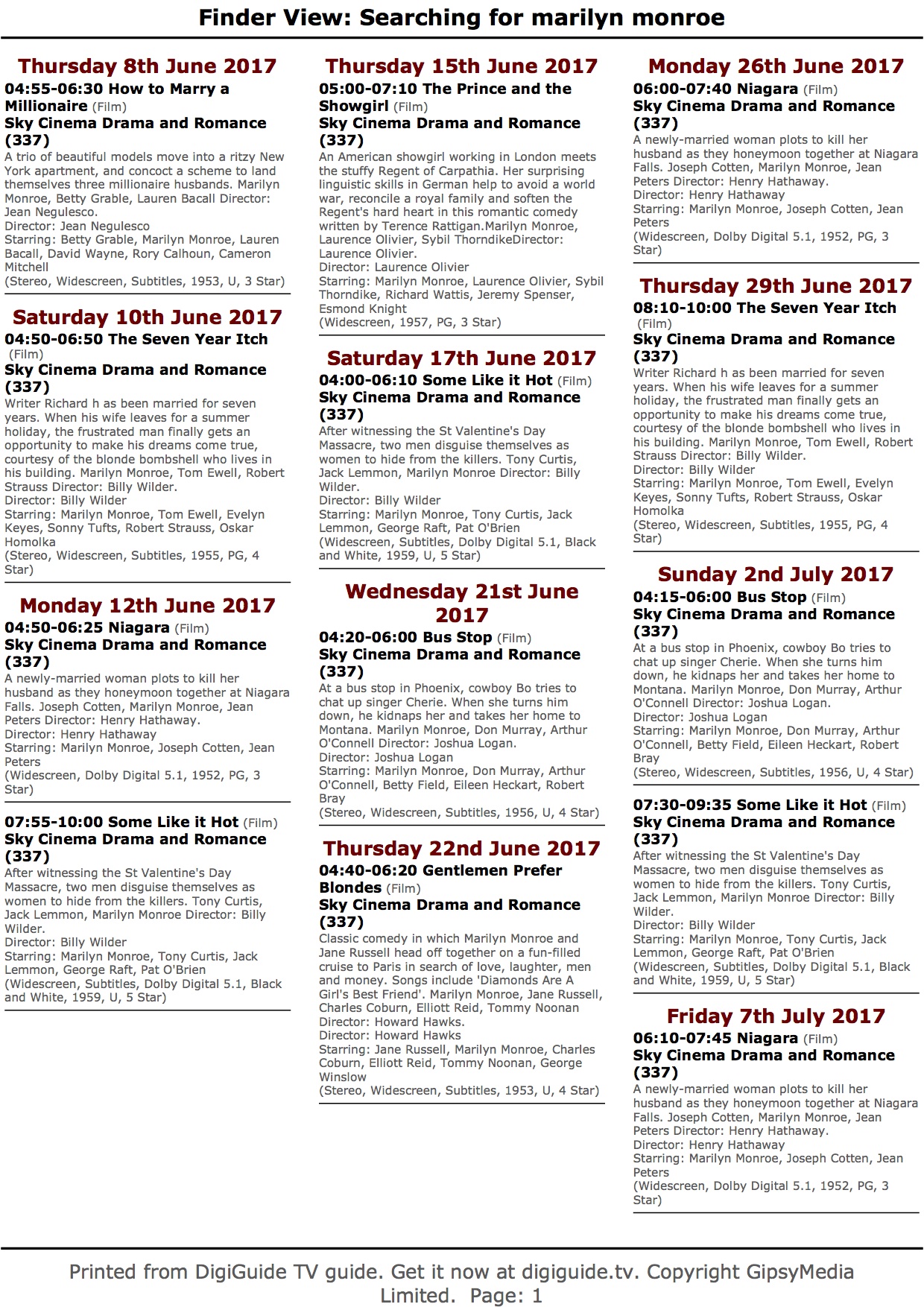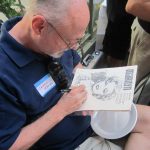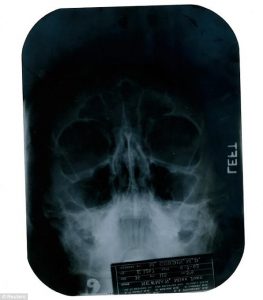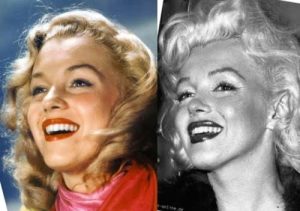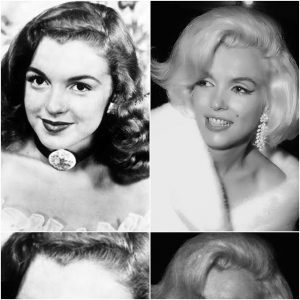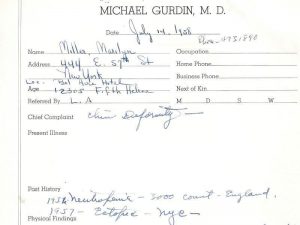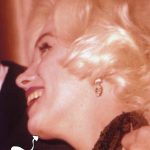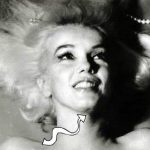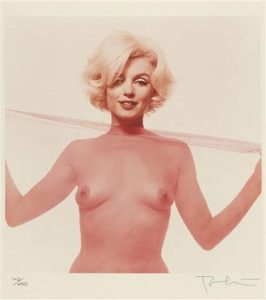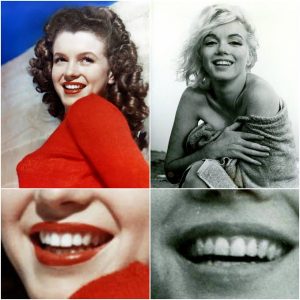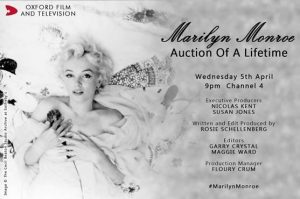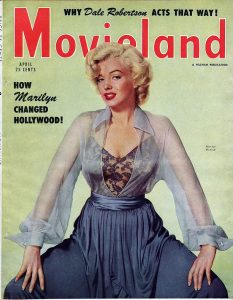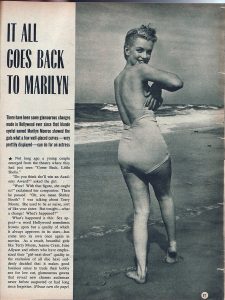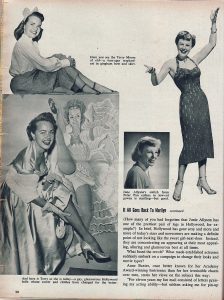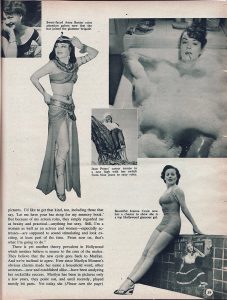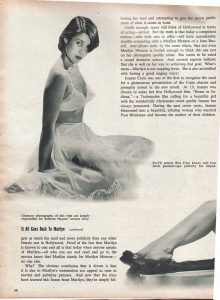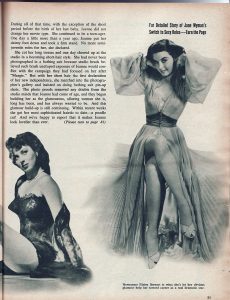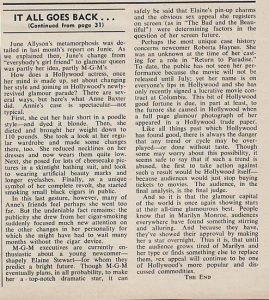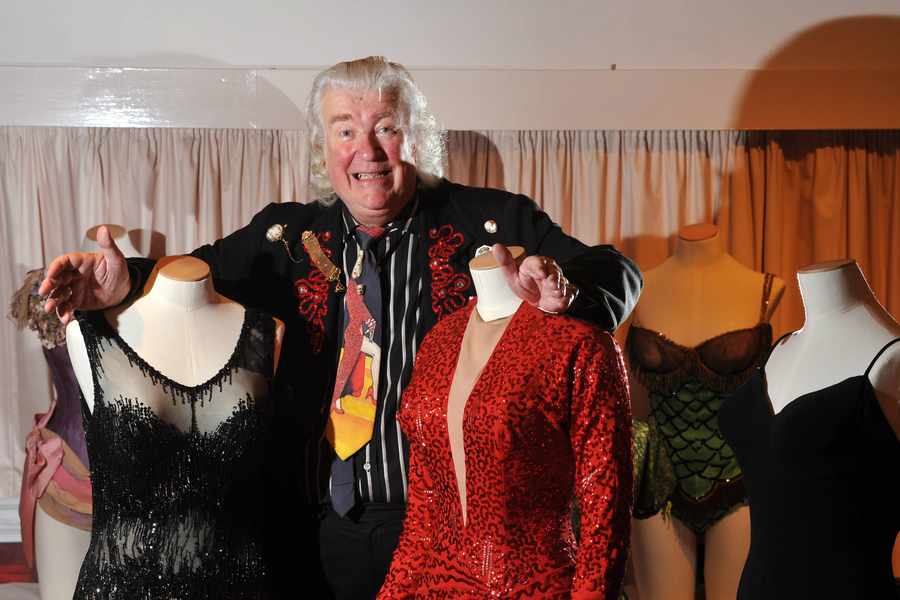
David Gainsborough-Roberts was a legend in the world of Marilyn collecting, in fact, collecting full stop. He will be known to every Marilyn fan as the owner of one of the biggest collections of personal/film worn memorabilia in the world.
And yet, we knew him. He was not one of those anonymous collectors who scoops up a precious item and never allows it to be seen again. He was extremely kind and generous with his pieces, displaying them all over the world, giving accompanying talks on Marilyn and interacting with her fans. Always friendly, always charming.
His passion for collecting began when he was nine and an elderly aunt gave him a fragment of HMS Victory.
Born in Buxton, Derbyshire in 1943, His early aspirations to become an actor soon waned and he became a promoter for of all things, professional wrestling. This was followed by a period working for his father’s merchant bank, Hardy Roberts & Sons. In true David style, he then entered the world of music promotion (his clients included The Kinks).
However, his life changed forever when he purchased Marilyn’s dress from ‘There’s no Business Like Showbusiness’ at Christie’s in 1991.
“I was buying certain stuff, not with any idea of buying Marilyn, when, in 1991, I bought her dress from There’s No Business Like Show Business. The sale became such a big smash hit. It got in the papers and everybody seemed to be talking about it. There was a near riot in Christie’s when I bought it. That was how it all started: April 29th 1991. It was a day that changed my life – and goodness knows I had no intention of it doing so. When I got back to Jersey, my mother said: I don’t know what you’ve been doing, but the phone won’t stop ringing!”
Even though you could say Marilyn was the biggest part of his collection, it was a mere fragment in an unbelievable time capsule. Other items included keys and coats from the Titanic, Winston Churchill’s hat, John Lennon’s cufflinks, Elvis’ ring, guns owned by Billy the Kid and John Dillinger, and even, Queen Victoria’s underpants. There were hundreds of items, and he was content to share them all. He once described his passion for collecting as ‘turning the pages of a history book’. However, it was Marilyn that people wanted to know about ‘she kind of took over’ he said. People from all over the world would contact him and he was always happy to respond.
He made his home in Jersey, and was a huge part of island life. The Jersey Museum commissioned a portrait of him in 2016 to thank him for their most successful exhibition ever, on, of course, Marilyn.
In November 2016 David sold his collection, raising £1.5m for charities on his beloved Jersey. On selling, he said “I hope my insatiable appetite for the curious, the famous and the infamous will inspire a new generation of custodians”.
His brother described him as someone who had a zest for life whom everyone loved, a character. And it was true.
Thank you, David, on behalf of Marilyn fans everywhere.
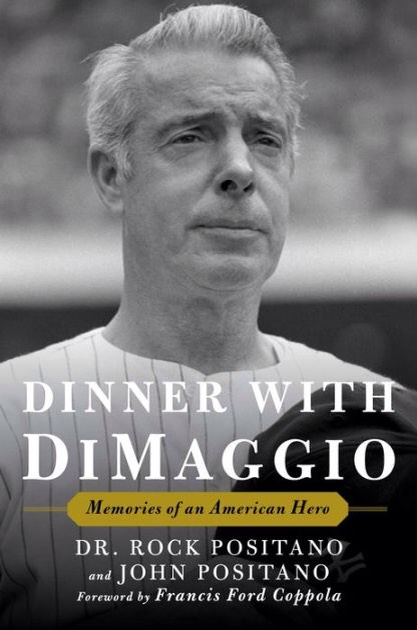 Dr Rock Positano was thirty-two, with his own practice in Manhattan specialising in non-surgical treatments for foot and ankle problems, when he met Joe DiMaggio in 1990. At seventy-six, DiMaggio still suffered from the effects of a botched foot operation which had brought his baseball career to an abrupt end in 1951. Over the next decade, until Joe’s death in 1999, Positano became his New York companion and confidant. A notoriously difficult man to know, DiMaggio was both deeply private and intensely concerned with his reputation. First announced back in 2015, Dinner With DiMaggio: Memories of an American Hero promises a rare glimpse into the private life of a frequently misunderstood man, and although occasionally prone to sensationalism, for the most part it delivers.
Dr Rock Positano was thirty-two, with his own practice in Manhattan specialising in non-surgical treatments for foot and ankle problems, when he met Joe DiMaggio in 1990. At seventy-six, DiMaggio still suffered from the effects of a botched foot operation which had brought his baseball career to an abrupt end in 1951. Over the next decade, until Joe’s death in 1999, Positano became his New York companion and confidant. A notoriously difficult man to know, DiMaggio was both deeply private and intensely concerned with his reputation. First announced back in 2015, Dinner With DiMaggio: Memories of an American Hero promises a rare glimpse into the private life of a frequently misunderstood man, and although occasionally prone to sensationalism, for the most part it delivers.
Joe was a fisherman’s son, and his father – a Sicilian immigrant to San Francisco – had wanted him to follow the family trade. Having disappointed him at an early age, Joe grew closer to his mother. Throughout his life, he strove to avoid any hint of scandal. This perfectionism made him fiercely self-critical, and equally intolerant of others who failed to meet his high standard. He came face to face with one of his own idols when President Franklin D. Roosevelt, who guided America through the Great Depression, saw him play in the 1936 World Series. After the game, the president got into a big limousine parked on the infield. “Joe, great catch!” he said, his hands cupped. “FDR was my hero,” Joe marvelled, “and he was admiring me!”
During World War II, his parents (like many other Italian Americans) were declared ‘enemy aliens’. It’s no surprise that Joe resented his military service. President Roosevelt barred him from overseas combat, and he was assigned to the USO entertainment division. But his patriotism was proved beyond doubt when he helped the FBI to track down a suspect in a 1959 narcotics case.
Joe met his first wife, showgirl Dorothy Arnold, on a film set. Their son, Joe DiMaggio Jr., was born in 1941, but the couple were soon embroiled in a bitter divorce. “Dorothy was always trying to get between my little guy and me,” Joe told Positano; nonetheless, even when she sued him for more money, Joe refused to disclose her infidelities (not to mention his own.)
Although he was a lifelong movie fan, Joe’s brushes with Hollywood left him unimpressed. In the late 1940s, he was dining at the Stork Club with some of the biggest names in the movie industry, including Marlene Dietrich and the Bogarts. “Those Hollywood big-shots were all baseball fans,” he recalled, “but they liked to talk about themselves more.” Charlie Chaplin came to the table and introduced himself to Joe, while pointedly ignoring the others. “I didn’t know that he was being blackballed by the entertainment industry and not welcome in Tinseltown,” Joe explained. “My companions and their huge egos were flabbergasted.”
From the New York Post to The Times, media coverage of Dinner With DiMaggio has mainly focused on his ill-fated second marriage to Marilyn Monroe, although it comprises only a small part of the book. “I knew better than to pry,” Positano says, claiming that Joe gradually opened up. “He also spoke with [lawyer] Morris Engelberg about Marilyn,” he adds, “but I never knew what he told each of us, and Morris and I never compared notes.”
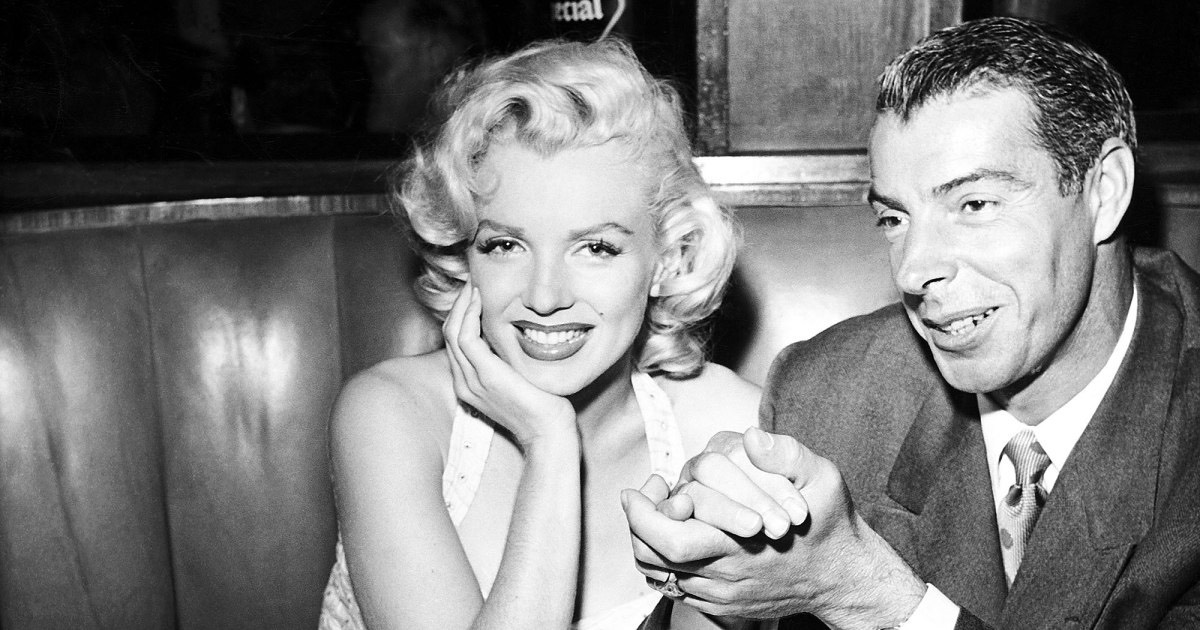
Joe thought Marilyn was both beautiful and “highly intelligent,” as Positano revealed in a recent interview for People magazine. “He had a tremendous amount of respect for Marilyn because she was a really great actress.” Their marriage ended, Joe said, because “Marilyn was hurt by the woman thing – her inability to have children.” On their wedding day, Marilyn told reporters she hoped for six children; Joe wanted just one. She suffered from endometriosis, which made it extremely difficult for her to carry a pregnancy to term. Nonetheless, her star was rising when she married Joe, and babies seem not to have been an immediate priority. His jealousy, and her ambition, were more likely causes of the split. When crowds gathered to watch her standing over a subway grate during filming of The Seven Year Itch, columnist Walter Winchell dragged a reluctant Joe along. The couple separated shortly afterward. A few weeks later, Joe and Frank Sinatra tailed Marilyn as she drove to a dinner date, and broke into a neighbouring apartment. The resident sued, and the so-called ‘Wrong Door Raid’ was a rare public disgrace for Joe.
“Doc, Marilyn told me that no man ever satisfied her like I did,” Joe said. Although respectful in public, Joe apparently took a dim view of her third husband, Arthur Miller. Sinatra told Joe that Marilyn kept a photo of him hidden in a closet, which “drove Miller crazy and right to the divorce court.” This story was first published in Marilyn Monroe Confidential (1980), the ghost-written memoir of Lena Pepitone, her New York maid. Others, like Marilyn’s friend Amy Greene, have spoken of her sexual chemistry with Joe, although she would later write of being “attracted beyond my senses” to Arthur. Joe’s name was not cited in the Millers’ 1961 divorce, which was granted on grounds of mutual incompatibility.
In the final years of her life, Marilyn grew close to Joe again. Talk of reconciliation was rife, but she insisted they were just good friends. He allegedly blamed the Kennedys for her death. “They did in my poor Marilyn,” he lamented. “She didn’t know what hit her … my good friend, Frank Sinatra, was their pimp.” Joe had probably been hurt by Marilyn’s relationship with Frank, but by 1962, when her alleged involvement with John F. Kennedy occurred, the president had distanced himself from Sinatra. Positano repeats the tale of Joe snubbing Bobby Kennedy at Yankee Stadium in 1965.
But Marilyn had a long history of depression, and was addicted to sleeping pills. Joe told Positano that she would sometimes neglect her appearance. “Though Joe saw Marilyn’s behaviour become erratic, he was unsophisticated about mental illness,” Positano reflects. “I had the impression that Joe did not understand what happened. He was to regret it for the rest of his life.” He may have experienced a form of survivors’ guilt, which left him susceptible to the rampant gossip and conspiracy theories that have circulated ever since Marilyn’s death.
Marilyn was fond of Joe’s son, who was twenty-one when she died. Their frequent telephone conversations were apparently a cause of concern to Joe. It’s possible that the younger man could have developed a crush on Marilyn, but there is no indication that her own feelings were anything but maternal. These pitiful confessions expose Joe’s hidden insecurity, and at times feel uncomfortably intrusive. In later life Joe Jr battled alcoholism and died penniless, survivIng his father by only a few months. Although their relationship was further strained by “lies and exaggerations” in the press, Joe was devoted to his granddaughters and great-grandchildren. One of his proudest achievements was the opening of the Joe DiMaggio Children’s Hospital in Florida. “Joe’s fatherly skills must have skipped a generation,” Positano concludes.
With well-chosen investments, lucrative advertising endorsements and an active role in the growing trade for sports memorabilia, Joe was a wealthy man. “All of us ballplayers have Joe to thank for a life after baseball,” said fellow legend Sandy Koufax, while Positano admitted, “I was impressed by his business savvy … Not bad for a high school dropout.” But Joe refused to consort with anyone he didn’t respect, regardless of their credentials. At the 75th anniversary gala for Time magazine, he turned down an invitation to meet the Clintons. On the other hand, he was friendly with former US diplomat Henry Kissinger, and the unlikely pair attended the 1997 World Series.
Although he never remarried Joe was still attracted to women, nursing a secret crush on supermodel Elle McPherson. Pop star Madonna would mention both Joe and Marilyn in her hit song ‘Vogue’, appearing as a Monroe clone in the video. During his final trip to New York in 1999, a frail Joe was in a nostalgic mood. “I miss Marilyn more than ever,” he confided. “Marilyn, Frank and me were all working-class kids. No one taught us this fame-and-fortune racket. In our own way, it wounded us all. But I can say I regret nothing. Well, almost nothing … Doc, we should have reached out to help each other. Marilyn, Frank and I tried to stand on our own. We didn’t do too well …”
-Tara Hanks
The Elvis and Marilyn Affair
By Robert S. Levinson
1999 A Forge Book, Tom Doherty Associates, LLC
ISBN 0312869681
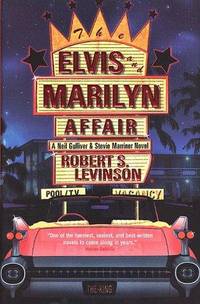 We all know that Marilyn has played muse not only to biographers, poets, artists and filmmakers over the years but novelists as well. Sometimes the results are very good, sometimes pretty good, and sometimes not so good at all. But if you are overwhelmed with the idea of reading yet another biography, tired of thinking through yet another conspiracy theory, and have had it up to here with the names of Slatzer, Carmen, Jordan et al, maybe it’s time you switched to fiction clearly labeled as fiction.
We all know that Marilyn has played muse not only to biographers, poets, artists and filmmakers over the years but novelists as well. Sometimes the results are very good, sometimes pretty good, and sometimes not so good at all. But if you are overwhelmed with the idea of reading yet another biography, tired of thinking through yet another conspiracy theory, and have had it up to here with the names of Slatzer, Carmen, Jordan et al, maybe it’s time you switched to fiction clearly labeled as fiction.
As I say, there’s a lot to choose from, (try finding a copy of Sam Staggs’ “MMII: The Return of Marilyn Monroe” or Doris Grumbach’s “The Missing Person” but stay clear of John Rechy’s “Marilyn’s Daughter”. If you are not up for the heavy-handed drama of Oates’ “Blonde” why not try for something fun, of no consequence, the sort of book they used to call “beach reads”, (meaning something that you can read while listening to the radio and watching the kids and not care if you get sand all over it). A beach read really is a polite term for something that is pure fluff, has no pretensions of art, can be read quickly and forgotten just as quickly: but leave you with a good after taste– kind of like a Doris Day movie.
“The Elvis and Marilyn Affair” is forgettable but fun fluff. The idea is that MM and the Pelvis met up at Fox while she was finishing “Bus Stop” and he was working on “Love Me Tender” and then elaborates on the premise that the two fell hard for one another and carried on a “torrid” affair, (is there any other kind of Hollywood affair?). The myth lived on and people always wondered—was that for real or was the Marilyn and Elvis affair just a publicity ploy? Set in present day, the book’s premise has a Hollywood big wig who has been killed, possibly offed because he might have been in possession of a treasure trove of love letters between Marilyn and the King. Like a lot of beach reads, you’ve just got to let yourself go and enjoy the ride through a convoluted plot and nonsense filled with gumshoes, MM imitators, and lots of movie stars and movie star wannabes.
Sure it’s a thin plot. We’re not talking Fitzgerald or even Danielle Steel. The characters are one dimensional, the page is filled primarily with snappy dialog but more along the lines of one of those Porky movies than anything with Nick and Nora Charles. Again, we’re not talking literature here; one look at the cover and you know this is not going to be anything with “In depth” or “Revealing” on its cover blurbs. It’s fun escapism and takes maybe a few sittings to finish off and forget.
But credit where credit is due, the author has done a bit of research—at least he can accurately describe Westwood Memorial even if he makes a mistake on Marilyn’s crypt marker. But the way I look at it, if the book clearly states THIS IS FICTION, I’ll give the author a bit of slack rather than my usual nitpicking. The trick, sometimes, is just to lighten up and enjoy. We all agree Marilyn should be taken seriously but surely even Marilyn had moments when she just wanted to kick back and be entertained. One of my favorite lines is when she said sometimes her brain got real starved. But ya know, there are times when candy just sounds a lot better than something healthy.
Summer’s upon us and sometimes even the most devoted Marilyn fan just needs something to read that requires very little exercise of the old gray matter. And if you happen to live far, far away from anything remotely sandy, you can always turn all the lights up high in the living room, stretch out on a terry cloth towel and strip down to your bathing suit and pretend. Actually that sounds kind of fun.
-David Marshall

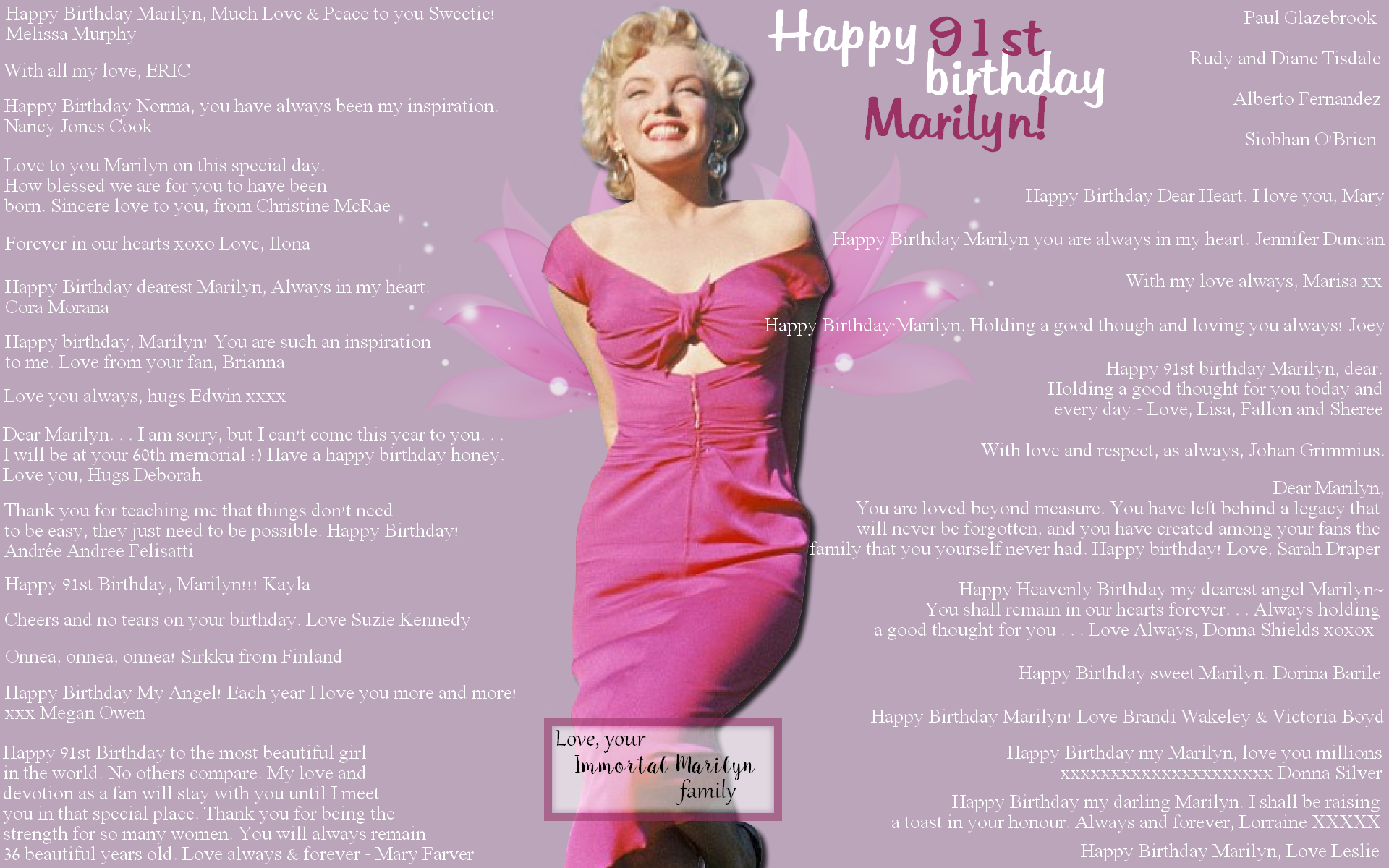
IM’s beautiful birthday flowers for Marilyn were delivered and are gorgeous as ever! We raised $300 to donate to Animal Haven.
Thank you to our LA Rep Holly Beavon for printing the birthday card and getting us these photos at her crypt. A big thank you too to Kyla for creating the beautiful birthday card. And last but not least, thank you to all who contributed to making this happen!
Mary Farver
Paul Glazebrook
Megan Owen
Rudy and Diane Tisdale
Alberto Fernandez
Sirkku Aaltonen
Suzie Kennedy
Kayla Knight
Andrée Felisatti
Deborah Bakker
Edwin Bakker
Brianna Coben
Cora Morana
Ilona Grasberg
Christine McRae
Nancy Jones Cook
Melissa Murphy
Eric Patry
Leslie Kasperowicz
Lorraine Nicol
Siobhan O’Brien
Donna Silver
Brandi Wakeley & Victoria Boyd
Dorina Barile
Donna Shields
Sarah Draper
Johan Grimmius
Lisa Bates-Slone, Fallon Slone and Sheree
Joey Traughber
Marisa Monroe
Jennifer Duncan
Carolien Krijnen
Deb Hoyle
Mary Sims

James Spada, author of the much-loved 1982 book, Monroe: A Life in Pictures, has passed away aged 67.
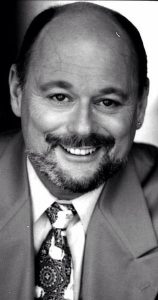 He was born in Staten Island, New York, in 1950 – the year in which a young Marilyn Monroe made her breakthrough in Hollywood. “When I first saw a photo of her in the newspaper,” James said, “I was totally enamored.” He would later write that his father, Joseph Spada, “always encouraged me in my love for Marilyn.”
He was born in Staten Island, New York, in 1950 – the year in which a young Marilyn Monroe made her breakthrough in Hollywood. “When I first saw a photo of her in the newspaper,” James said, “I was totally enamored.” He would later write that his father, Joseph Spada, “always encouraged me in my love for Marilyn.”
Like many others, James vividly remembered hearing of her tragic death in 1962. “I was twelve – a kid with a scrapbook,” he told Immortal Marilyn in 2013, recalling that when a friend of his brother called to tell him the news, he turned on the radio and burst into tears. “After she died there wasn’t much interest in her in the press,” James recalled, “not like there is today.” In 1963 he founded the Marilyn Monroe Memorial Fan Club with fellow fan George Zeno. Over the next four years, the friends produced regular bulletins and yearbooks, mailing them to other admirers.
While in college, James edited EMK, a quarterly dedicated to Senator Edward Kennedy. In 1970, he worked as an intern in Kennedy’s Boston office. His debut book, Barbra: The First Decade, was published in 1974. The multi-talented Streisand was the quintessential star of her era, and James would become a leading authority on her remarkable career. This was followed by The Films of Robert Redford in 1978. And in 1979 came The Spada Report, based on hundreds of interviews with gay men, and documenting a social revolution in progress.
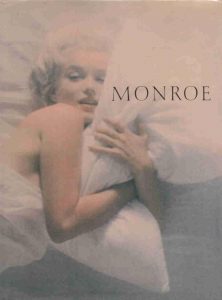 Twenty years after Marilyn died, James reunited with George Zeno for a lavish tribute. Monroe: A Life in Pictures combines more than 200 black-and-white photographs, including film stills, studio portraits and newspaper shots, with a mid-section of full-page, glossy colour images by Andre De Dienes, Cecil Beaton and others. At the time, many were unknown to the public. Douglas Kirkland’s gorgeous cover photo epitomises Marilyn’s unique blend of sex and innocence, and a life poised between beauty and sadness. Inside, Spada retold her fabled story through extended captions, enhancing each photograph with his impeccable research and sensitive commentary. Monroe: A Life in Pictures was a bestseller, spawning many imitations but seldom equalled. Its success enabled James to produce similar volumes on Judy Garland and Liza Minnelli, Katharine Hepburn, and Jane Fonda.
Twenty years after Marilyn died, James reunited with George Zeno for a lavish tribute. Monroe: A Life in Pictures combines more than 200 black-and-white photographs, including film stills, studio portraits and newspaper shots, with a mid-section of full-page, glossy colour images by Andre De Dienes, Cecil Beaton and others. At the time, many were unknown to the public. Douglas Kirkland’s gorgeous cover photo epitomises Marilyn’s unique blend of sex and innocence, and a life poised between beauty and sadness. Inside, Spada retold her fabled story through extended captions, enhancing each photograph with his impeccable research and sensitive commentary. Monroe: A Life in Pictures was a bestseller, spawning many imitations but seldom equalled. Its success enabled James to produce similar volumes on Judy Garland and Liza Minnelli, Katharine Hepburn, and Jane Fonda.
In 1987, James published his first non-pictorial biography, Grace: The Secret Lives of a Princess. This was followed by Peter Lawford: The Man Who Kept All the Secrets (1991), and Bette Davis: More Than a Woman (1993.) He also wrote several coffee-table books about America’s political families, including Jackie: Her Life in Pictures (2000.)
 In more recent years James completed a biographical novel about Edgar Allen Poe and three collections of his own erotic photography, as well as an anthology, The Romantic Male Nude. His final book, Barbra Streisand: In the Camera Eye, was published in 2014. Monroe: A Life in Pictures is now available on Kindle, and in 2016, a rather gossipy extract from his biography of Peter Lawford was reprinted in a one-off magazine special, Vanity Fair Icons: Marilyn Monroe. He also mentioned Marilyn frequently on his entertaining blog, James Spada’s Hollywood.
In more recent years James completed a biographical novel about Edgar Allen Poe and three collections of his own erotic photography, as well as an anthology, The Romantic Male Nude. His final book, Barbra Streisand: In the Camera Eye, was published in 2014. Monroe: A Life in Pictures is now available on Kindle, and in 2016, a rather gossipy extract from his biography of Peter Lawford was reprinted in a one-off magazine special, Vanity Fair Icons: Marilyn Monroe. He also mentioned Marilyn frequently on his entertaining blog, James Spada’s Hollywood.
James was a popular speaker at the annual memorial services hosted by our sister club Marilyn Remembered in Los Angeles, including the fiftieth anniversary of her death in 2012. Many fans have spoken fondly of their personal encounters with this gentle, approachable man. Set apart by visual elegance and a genuine enthusiasm, Monroe: A Life in Pictures remains a classic of its kind. If you don’t have a copy it can still be found online or in used bookstores, earning a rightful place in every fan’s library, and all our hearts.
James Spada attended Immortal Marilyn’s 2012 Pool Party during Memorial Week. Below are photos of James, who was happy to sign autographs and pose with fans.
-by Tara Hanks
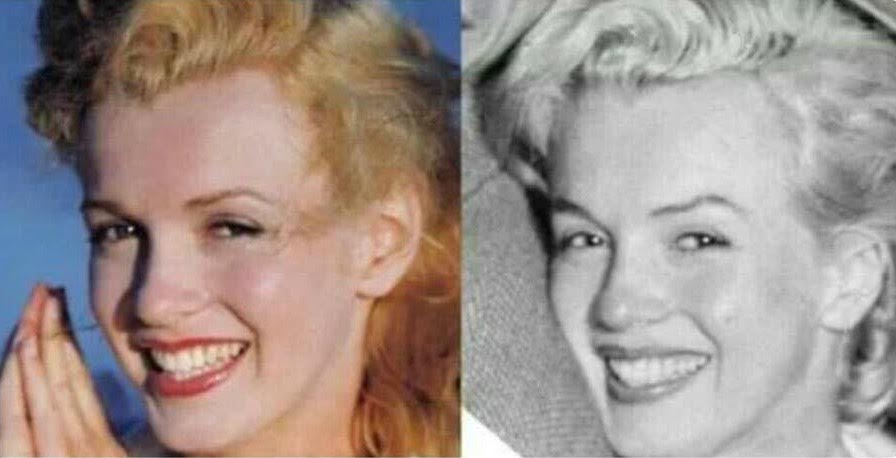
When a woman is so timelessly and stunningly beautiful as Marilyn Monroe, people are curious as to whether it’s all natural born beauty or if she’s had nips, tucks, lifts, and enhancements. Rumors circulate all the time about whether or not Marilyn Monroe had plastic surgery and to what extent, and lengthy debates never seem to come to a conclusion. So what are the facts about Marilyn’s alleged plastic surgery?
1. Rhinoplasty
Some authors have claimed that Marilyn had minor rhinoplasty, i.e., a nose job, although they do not allege that she had her entire nose reshaped but simply had the tip of it trimmed to appear less bulbous. Comparison photos do not show much difference in her nose, and any minor changes could also be attributed to greater makeup skill and lighting techniques. The source of the nose job claim is unknown, as it does not appear anywhere in her known medical records. Her medical records do indicate that she was seen for a possible nasal fracture on June 7, 1962, but there is no mention of previous surgery. The nurse who worked for Marilyn’s surgeon, Dr. Gurdin, was Dorothy Henderson. Henderson stated that while she did assist with Marilyn’s medical treatments, she had no recollection of anything being done to her nose. Until solid evidence is forthcoming, this claim is dubious.
2. Electrolysis
Some books have alleged that Marilyn underwent hairline electrolysis, a method that in her era utilized a thin metal probe to reach into the hair follicle to permanently remove hair. Some sources claim she did it to minimize her widow’s peak while others state contrarily that she did it to emphasize it. In the 1940s and 50s, electrolysis was a painful and lengthy process, it would have caused redness and irritation along her hairline and could take up to a year of treatments before being considered complete. Marilyn was modeling nearly nonstop during this time and there are certainly no photos of her with a reddened and inflamed forehead. Also, comparison photos show that her widow’s peak remains practically the same over the entire course of her career. This claim appears to be a myth.
3. Chin Implant
In 2013, the rumors of Marilyn having had chin augmentation were finally put to rest when the medical records of Dr. Michael Gurdin came up for auction. Dr. Gurdin’s notes from July 14, 1958 state that Marilyn had come to see him about a ‘chin deformity’ and that she’d had a small cartilage implant in 1950. His notes further state that the implant had become reabsorbed over time, there was ‘mild flatness’ of the chin, and that he could not feel the implant anymore under the skin. There are also a handful of photos where the small scar on her chin is visible, further proving that this rumor is in fact true.
4. Breast Augmentation
Also in 2013, a salacious rumor was started by Joan Kron, editor of Allure magazine. She wrote that a ”friend” of Marilyn’s, Rosemary Eckersley, stated that near the time of her death, Marilyn had painful breast infections as a result of silicone injections. One does not have to dig very deep to find these allegations absurd. Firstly, there is no record of Marilyn having a friend by the name of Rosemary Eckersley. Marilyn authors, scholars, and colleagues were left befuddled by the name, as it does not appear anywhere in correlation to Marilyn’s life and had never been mentioned until the 2013 article.
While Marilyn’s breast size did fluctuate, as nearly all women experience, if one looks at the topless photos taken by Bert Stern in June 1962, her breasts are actually significantly smaller than in the zaftig figure Marilyn had throughout the 1950s. Following her gall bladder surgery in 1961, Marilyn’s weight dropped down to 115 pounds, and naturally her breasts reflected this weight loss. If she had the alleged breast infection, she certainly would not have felt comfortable posing topless as her breasts would have been red and sore. Her autopsy also indicates there was nothing unusual about her breasts, an infection and injected silicone would certainly have been noted. This rumor is utterly false.
5. Dental/Orthodontic Work
It is said that in 1948, Marilyn’s then boyfriend Fred Karger took her to see orthodontist Dr. Walter Taylor, and paid for a retainer to correct an overbite and teeth bleaching. Details are vague and documentation is difficult to locate so this story is hard to confirm or deny. It is interesting, however, that Marilyn’s file for the Blue Book Modeling Agency in 1946 makes significant notation that her teeth are ‘perfect’. Her long time dentist, Dr. LeRoy Nisson, recalled in 2015 that Marilyn had ‘the most beautiful set of teeth” and “the best teeth I’ve ever seen”
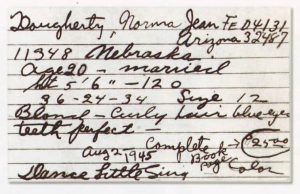 A more macabre and salacious rumor was started in 2015 by mortician Allan Abbott. The ghoulish Abbot made outrageous claims about the condition of Marilyn’s body, including that she had false teeth. He went so far as to claim this was noted in her autopsy report. Abbot has a long history of telling exaggerations and outright falsehoods in regards to Marilyn and other celebrities, and this is no exception. There is zero evidence that Marilyn had dentures, and her autopsy report makes no mention of her teeth which by all other accounts were her own.
A more macabre and salacious rumor was started in 2015 by mortician Allan Abbott. The ghoulish Abbot made outrageous claims about the condition of Marilyn’s body, including that she had false teeth. He went so far as to claim this was noted in her autopsy report. Abbot has a long history of telling exaggerations and outright falsehoods in regards to Marilyn and other celebrities, and this is no exception. There is zero evidence that Marilyn had dentures, and her autopsy report makes no mention of her teeth which by all other accounts were her own.
Based on known documentation, the only plastic surgery claim about Marilyn that can be confirmed for certain is that she had a small chin implant. It’s very telling that this is the only rumor that has substantiation, both through doctor’s records and photographs, while the other speculations have little to support them other than hearsay. The truth of it is that Marilyn had extremely minimal work done- so minimal that it’s undetectable in before and after photos, so minimal that when her chin implant was reabsorbed it didn’t alter her stunning face in any perceptible way. However, even if every single claim of plastic surgery were true, it does not diminish Marilyn’s remarkable beauty. Often comments about her having had cosmetic surgery are made in an effort to demean and belittle her, as if the person stating it refuses to accept that she could have possibly been that beautiful all on her own. These statements reveal far more about the insecurities of the person making them than they do about Marilyn. One does not need to use allegations of plastic surgery as an insult or a put down, and women shouldn’t be demeaned for their nips and tucks or however else they choose to present themselves to the world. Marilyn faced a litany of scrutiny under a microscopic lens during her lifetime and our society has progressed to criticize women’s appearances even more harshly. Let us appreciate her for how she chose to look without picking apart what was natural and what may have been enhanced, and let us stop trying to assuage our own insecurities by feasting on the flaws, real or imagined, of other women.
Marijane Gray for Immortal Marilyn

A new Channel 4 documentary, Marilyn Monroe: Auction of a Lifetime, begins with some footage of the star in 1960, arriving in New York for test shots on what would be her last completed movie, The Misfits. The grainy clip was filmed by Frieda Hull of the Monroe Six, a gang of teenage fans based in Marilyn’s adopted city. One of the perks of Frieda’s job – airline stewardess – was a proximity to her idol on both coasts, and with Monroe’s goodwill, she amassed a large archive of candid photos which remained unseen until her death in 2014. A batch of colour snapshots taken the same day, was purchased recently by a former acquaintance of Hull, who claimed she told him Marilyn was secretly pregnant at the time by her Let’s Make Love co-star, Yves Montand. This random piece of hearsay was reported in the Daily Mail, and the National Enquirer who upped the ante by stating the father of this phantom baby was future president John F. Kennedy.
 “She was an object of desire for men and an inspiration to women,” says narrator Tracy Ann Oberman, as familiar images of Marilyn cut to a still of Madonna in her Blond Ambition days. Ever since the first dedicated auction at Christie’s in 1999, her possessions have become the most covetable of any modern celebrity. After a touring exhibit stopping off in London, Ireland, the USA (via a transatlantic cruise) and China, Julien’s Auctions held the largest sale to date in November 2016, drawn mostly from the estate of Lee Strasberg, and ranging from household goods and cosmetics to sketches and poems; the British collector David Gainsborough Roberts, who has amassed a number of her most famous movie costumes; plus smaller archives like Frieda Hull’s, and mementoes from the estate of Lois Weber, Marilyn’s former publicist. Even the four-volume catalogue, spread over 1,000 pages, is a collectors’ item priced at $400.
“She was an object of desire for men and an inspiration to women,” says narrator Tracy Ann Oberman, as familiar images of Marilyn cut to a still of Madonna in her Blond Ambition days. Ever since the first dedicated auction at Christie’s in 1999, her possessions have become the most covetable of any modern celebrity. After a touring exhibit stopping off in London, Ireland, the USA (via a transatlantic cruise) and China, Julien’s Auctions held the largest sale to date in November 2016, drawn mostly from the estate of Lee Strasberg, and ranging from household goods and cosmetics to sketches and poems; the British collector David Gainsborough Roberts, who has amassed a number of her most famous movie costumes; plus smaller archives like Frieda Hull’s, and mementoes from the estate of Lois Weber, Marilyn’s former publicist. Even the four-volume catalogue, spread over 1,000 pages, is a collectors’ item priced at $400.
“This is the last chance to see her through the things she loved,” Oberman says, although several lots (especially photographed) have reappeared on EBay. Even the auction’s centrepiece, the beaded ‘nude’ dress worn by Marilyn on John F. Kennedy’s birthday, first went on the block in 1999. It was sold again last November for $4.8 million – the most ever paid for a dress. The buyer, Ripley’s Believe It Or Not, will present it in future exhibitions. Some of Marilyn’s cash-strapped fans wish her property had been kept together, perhaps in a museum, but not even the Smithsonian can afford to invest now. Nonetheless, the diehard fans are a fairly close group, and I recognised several familiar faces among the bidders – including lookalike Suzie Kennedy, who also voiced some of Marilyn’s private notes for the documentary. Decorated for the occasion with giant, wall-to-wall photographs, the Beverly Hills auction house resembled the ‘Church of Marilyn’ in Ken Russell’s rock opera, Tommy.
Although there are some tantalising remnants from Norma Jeane’s early days, the narrative quickly skips ahead to the ‘red velvet’ calendar shots taken by Tom Kelley in 1949, when Marilyn was still relatively unknown. By 1952 she was on the cusp of fame, and as Sarah Churchwell observes, she would be the first major star to survive a nude photo scandal. “You don’t become the biggest movie star in the world by accident,” Churchwell concludes. At dinner with her agents, Marilyn jotted down notes on the menu, spelling out her vaulting ambition (“I can be one of your greatest stars”) and dramatic technique (“Think with your body – let go physically to pick up emotionally…”)
As actress Ellen Burstyn points out, this holistic approach was inspired by one of Marilyn’s favourite books, The Thinking Body by Mabel Elsworth Todd. Winning the role of Lorelei Lee in the glitzy musical, Gentlemen Prefer Blondes (1953), would be her reward. The dress worn by Marilyn in the opening number, says fashion historian Amber Butchart, made her “the quintessential showgirl – blood red, sequins everywhere, and form-fitting with that incredible plunging neckline.” (However, some experts believe the costume sold at auction may actually have been Jane Russell’s identical number.)
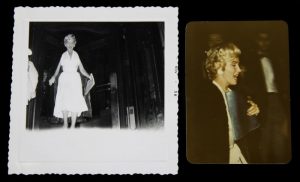 “I was astonished that a girl could be that sexy on purpose,” Ellen Burstyn recalls of Marilyn’s screen persona. “She revolutionised the female image.” Her explosive sexuality would also wreck her marriage to Joe DiMaggio. Candid photos by Frieda Hull show Marilyn on a New York street one September evening in 1954, preparing to film an outdoor scene for The Seven Year Itch. Arriving on Lexington Avenue, she wore her mink coat – a gift from Joe – over a cream, silky halter dress designed by Travilla for the movie. Her hair was still pinned, and she clutched a script. A raucous crowd gawped as she stood over a subway grate, her skirt blowing in the cool night air.
“I was astonished that a girl could be that sexy on purpose,” Ellen Burstyn recalls of Marilyn’s screen persona. “She revolutionised the female image.” Her explosive sexuality would also wreck her marriage to Joe DiMaggio. Candid photos by Frieda Hull show Marilyn on a New York street one September evening in 1954, preparing to film an outdoor scene for The Seven Year Itch. Arriving on Lexington Avenue, she wore her mink coat – a gift from Joe – over a cream, silky halter dress designed by Travilla for the movie. Her hair was still pinned, and she clutched a script. A raucous crowd gawped as she stood over a subway grate, her skirt blowing in the cool night air.
The city became her sanctuary, as she left marriage and Hollywood behind. Sarah Churchwell – author of a ‘meta-biography’, The Many Lives of Marilyn Monroe – describes the move as “a laudable attempt to create professional control … a new side of Marilyn was emerging.” She also came under the influence of Lee Strasberg, head of the Actors Studio. Marilyn in Manhattan author Elizabeth Winder says he taught Marilyn to “lean into her sensitivity.”
When Marilyn renegotiated her contract with Twentieth Century Fox, Time magazine praised her as a “shrewd businesswoman.” Her ‘comeback’ movie, Bus Stop, established her as not only a sex symbol, but also a formidable actress. Co-star Don Murray recalls that she dubbed her skimpy costume as weary nightclub singer Cherie a “snake outfit,” making serpentine gestures while singing ‘That Old Black Magic’ to a room of drunken cowboys. Amber Butchart notes that Marilyn chose authenticity over glamour, ripping up her fishnet stockings and clumsily darning them.
This UK-made documentary, helmed by Rosie Schellenberg, places a special focus on The Prince and the Showgirl, the film Marilyn made (and produced) in England. Agent Jay Kanter remembers her hiding in the bedroom “like a frightened deer” when she first met her co-star and director, Sir Laurence Olivier, but the venerable actor believed she could revitalise his career. Torn between Olivier’s disdain for method acting, and criticisms of the script from her new husband, playwright Arthur Miller, Marilyn’s confidence was shaken.
Biographer Lois Banner cites the alleged incident when Marilyn found Miller’s diary, claiming that he had written “words to the effect of ‘I married a whore.’” However, Miller’s diary has never been made public, and Elizabeth Winder may be nearer the mark when she suggests that Arthur simply felt that living with Marilyn was not what he expected. Banner also claims that Arthur “never had good sex before Marilyn,” whom she describes as “very practiced and experienced,” adding, “she blew his mind.” How Banner could know such intimate details is unexplained, and while Miller may have admired his wife’s sensuous nature, theirs was a traditional marriage, and Marilyn’s longest relationship.
After a brief sabbatical – rather melodramatically characterised as “a desperate attempt to save her marriage” – she returned to Hollywood for Some Like It Hot, her greatest success. She was also pregnant, but would later suffer a miscarriage. “She sometimes didn’t show until noon,” recalls Marian Collier, one of the last surviving members of Sweet Sue’s band. Director Billy Wilder was “calm and patient,” but leading man Tony Curtis “got a little upset.” The seamy black dress Marilyn wore to sing ‘I’m Through With Love’ was so tight that she had to be lifted onto the piano. “That was her voice, you know,” Collier says – many other stars of that era were dubbed. “Marilyn Monroe gives the film a heart,” Sarah Churchwell remarks. “She makes it touching and poignant.”
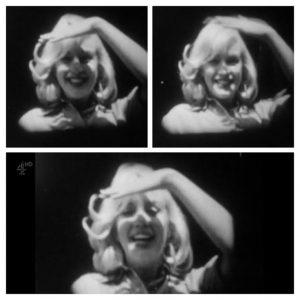 Marilyn’s brilliant performance in The Misfits is overlooked, as the narrative skips to her 1961 photo shoot with Douglas Kirkland, in which she lay nude under silk sheets. “She found the images that portrayed the Marilyn she felt she wanted to see portrayed,” Kirkland comments, remembering how she expertly manoeuvred the project from beginning to end.
Marilyn’s brilliant performance in The Misfits is overlooked, as the narrative skips to her 1961 photo shoot with Douglas Kirkland, in which she lay nude under silk sheets. “She found the images that portrayed the Marilyn she felt she wanted to see portrayed,” Kirkland comments, remembering how she expertly manoeuvred the project from beginning to end.
“Six months later she was sleeping with JFK,” the narrator continues, although no conclusive evidence of an affair can be found among the thousand lots at Julien’s. As so often happens in Monroe lore, the legend has surpassed reality. As the camera pans over the prescriptions and pillboxes she left behind, Sarah Churchwell offers a sobering analysis of Marilyn’s final decline: “There was no stability in her childhood. The Hollywood environment exacerbated those anxieties … She was often isolated, lonely …”
Last year’s auction at Julien’s raised $11,000,000 – Marilyn died with only a few hundred dollars in her checking account. She had been fired from her last movie, and although the narrator adds that a lucrative new deal was in place, this had not been finalised. The modesty of her estate stands in stark contrast to the vast profits still being made from her name. The woman who wanted her possessions to be divided among her friends would probably be bewildered by events like this, but it is perhaps an inevitable consequence of her enduring fame. “There was a sweetness about her,” says Ellen Burstyn, who knew Marilyn during her Actors Studio days. “She never played dark characters – always played characters filled with light, like a sexy angel. There has never been anyone like her.”
-Tara Hanks









